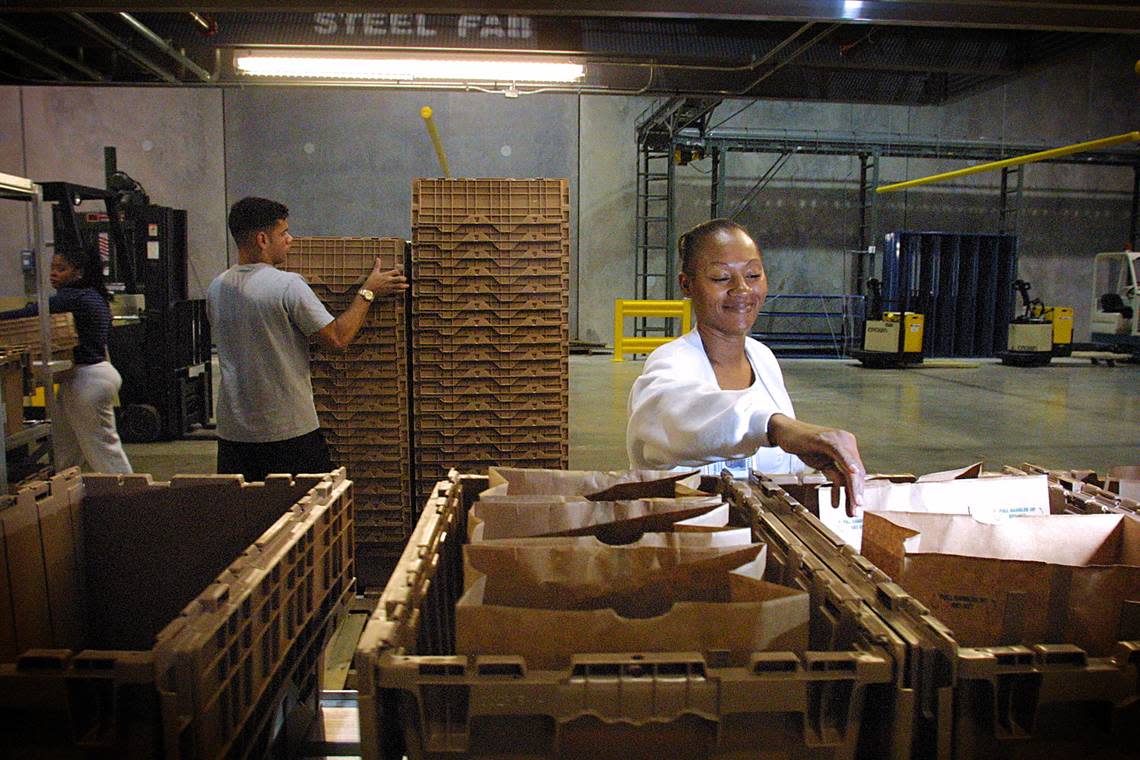Publix tried delivering groceries to homes 20 years ago. How did it work back then?
Instacart. Amazon. Kroger. Walmart.
Those are some of the places to shop online and get groceries delivered to your home, and maybe even put right into your fridge. The pandemic boosted supermarket delivery services as we stayed away from physical stores.
But 20 years before COVID, Publix launched a home-delivery service, with refrigerated trucks going from warehouse to neighborhood, delivering grocery orders to homes across South Florida.
Did it work? Was it an idea before its time?
Let’s take a look through the Miami Herald archives at the launch of PublixDirect — and then what happened to the service.
READ MORE: Publix, Walmart, Winn-Dixie, Aldi, Costco. Which grocer sees the most Florida shoppers?
Launch of online groceries
Published June 28, 2001
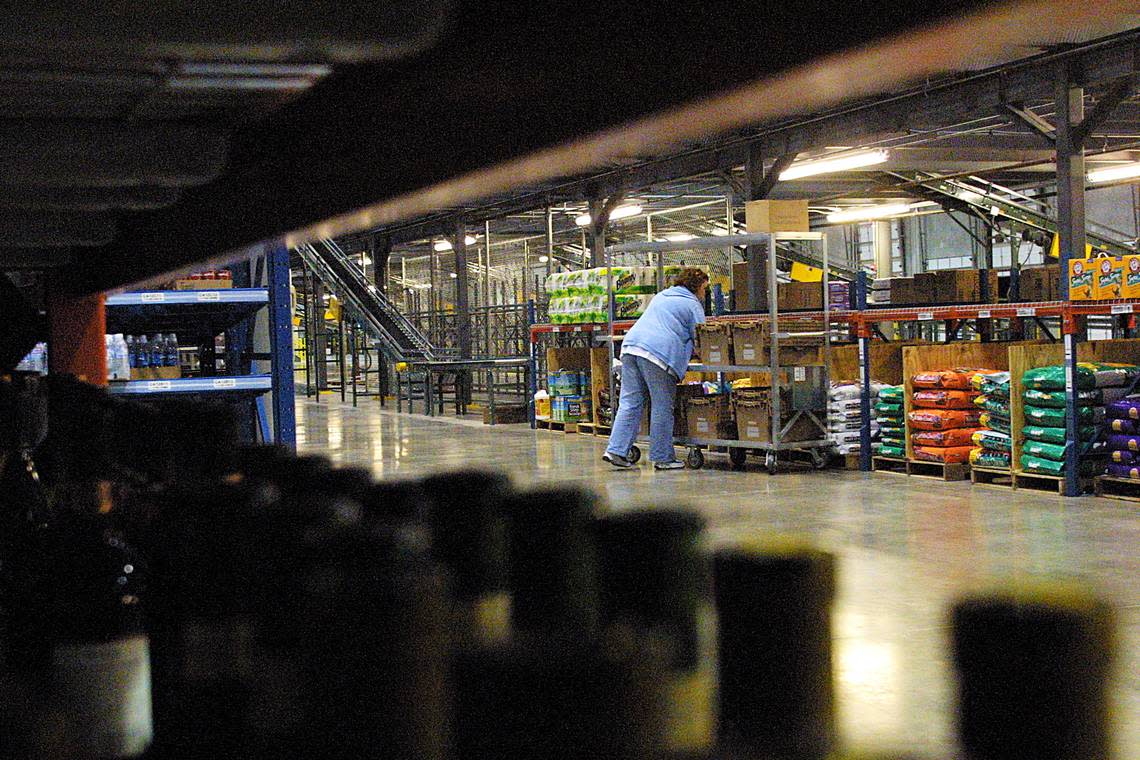
Although the online grocery market is littered with more failures than successes, Publix Super Markets is moving ahead with plans for home delivery.
PublixDirect is preparing to go live the first week of September with the state’s first online grocer, which will serve South Florida shoppers.
Consumers will be able to place orders online and have the groceries delivered to their door the next day for an $8 delivery fee and a $50 minimum order.
Operating out of a Pompano Beach warehouse, initially the service will only be available to consumers in North Broward County, but that is expected to quickly expand to anyone within a 25-mile radius of the warehouse.
Ultimately, Publix hopes the Pompano site will have enough capacity to serve all of Broward County, South Palm Beach and parts of North Dade, including Aventura and Miami Lakes. If the venture is successful, long-term plans would be to open another distribution center in Miami-Dade.
“We’ll expand as rapidly as possible,” said Tom O’Connor, president of PublixDirect, which is also preparing to launch service in Atlanta and Orlando. “We think there’s a demand out there among our customers. This is our chance to validate the market.”
Through PublixDirect.com, online shoppers will be able to order almost all of the same categories of products found in a Publix store, from produce to meat and laundry detergent to beauty supplies.
The Internet grocery will even have its own bakery, offering fresh-baked bread, cookies and cakes. The only categories it won’t have are deli platters, hot food and special-order items like decorated cakes or sub sandwiches.
But since the online warehouse will only stock about 9,000 items - about one-fourth the amount found in a traditional store - customers may not find as much depth and breath of specialty brands and product sizes.
“We’re certainly going to carry the items that sell the most,” O’Connor said.
Prices will be comparable to those found in area stores, although there will be a delivery fee and a minimum order. Deliveries must be made online and will not be accepted via phone or fax.
Shoppers will have to pick a 90-minute delivery window, when they will be home to receive the delivery. To meet the needs of working people that schedule will include hours at least until 9 p.m., along with weekend deliveries.
Orders will be available for next-day delivery, but can be placed up to seven days in advance. Deliveries can also be made to a customer’s office.
Analysts agree the market for online grocery channel is there, but the prospects for growth have dimmed substantially in recent years. Online grocery sales are expected to reach $1 billion in 2001 and $7 billion in 2005, according to Jupiter Media Matrix. Original forecasts had been for sales of $2 billion in 2001 and $18 billion in 2005.
That decline has coincided with the retrenchment of online retailers like Webvan, which had raised more than $1 billion and once had ambitious plans to go national. The online retailer has now scaled back to a few key markets as it struggles to survive. Webvan’s stock, which once traded as high as $25 per share in late 1999, closed Wednesday at 8 cents.
The trend in online retailing has been toward the marriage of traditional grocery retailers with Internet-only partners. Dutch conglomerate Ahold bought a majority share in Peapod, and GroceryWorks.com has teamed up with Safeway and Tesco, Britain’s largest supermarket operator.
Analysts believe these traditional retailers have the best chance of success.
“They understand their customers,” said Alan Alper, an Internet consultant with Gomez Inc. in Waltham, Mass. “If they can bring those sensibilities to their online offerings, they’re going to be fine.”
Publix is counting on is its ability to leverage its existing resources, buying power and name recognition. Those are advantages the Internet-only retailers like Webvan didn’t have.
“We’re quite satisfied that we have a very viable financial model,” O’Connor said. “To us it’s what we already do. It’s just like having another store. It’s offering another channel of distribution to our customers.”
Publix has said in documents filed with the Securities and Exchange Commission that it expects to spend almost $33 million this year for the development of its website, construction of the Pompano Beach fulfillment center and future centers in expansion markets of Atlanta and Orlando. The supermarket chain also expects to spend another $18 million on operating expenses for PublixDirect.
Analysts say it will be challenging for Publix to turn a profit because of the high costs associated with the distribution center and delivery system. Some estimates put those costs at $30 per order.
“It’s a tough model to make work,” said Ken Cassar, senior analyst with Jupiter Media Matrix. “If I were Publix I would have entered with a more modest effort. I don’t know that the market is ready for that right now. It’s extremely expensive to get products from the warehouse shelf to consumers.”
In order to lower those costs, other supermarket chains like Albertson’s and Safeway are testing online services in markets on the West Coast that do not use a centralized warehouse. Instead, orders must be picked up at the store and orders are filled off the store shelves.
PublixDirect considered that model, but opted to go in a different direction because of the traffic at its stores.
“Most of our stores are just too busy,” O’Connor said. “If you added online shoppers it would compete with the existing customers and it would deplete the store shelves.”
Depending on the success of its online operation, PublixDirect would eventually add other options including pick-up at store drive-up windows, workplace locations or in store parking lots.
READ MORE: More and more grocery stores are opening in Florida. But many are gone. Remember these?
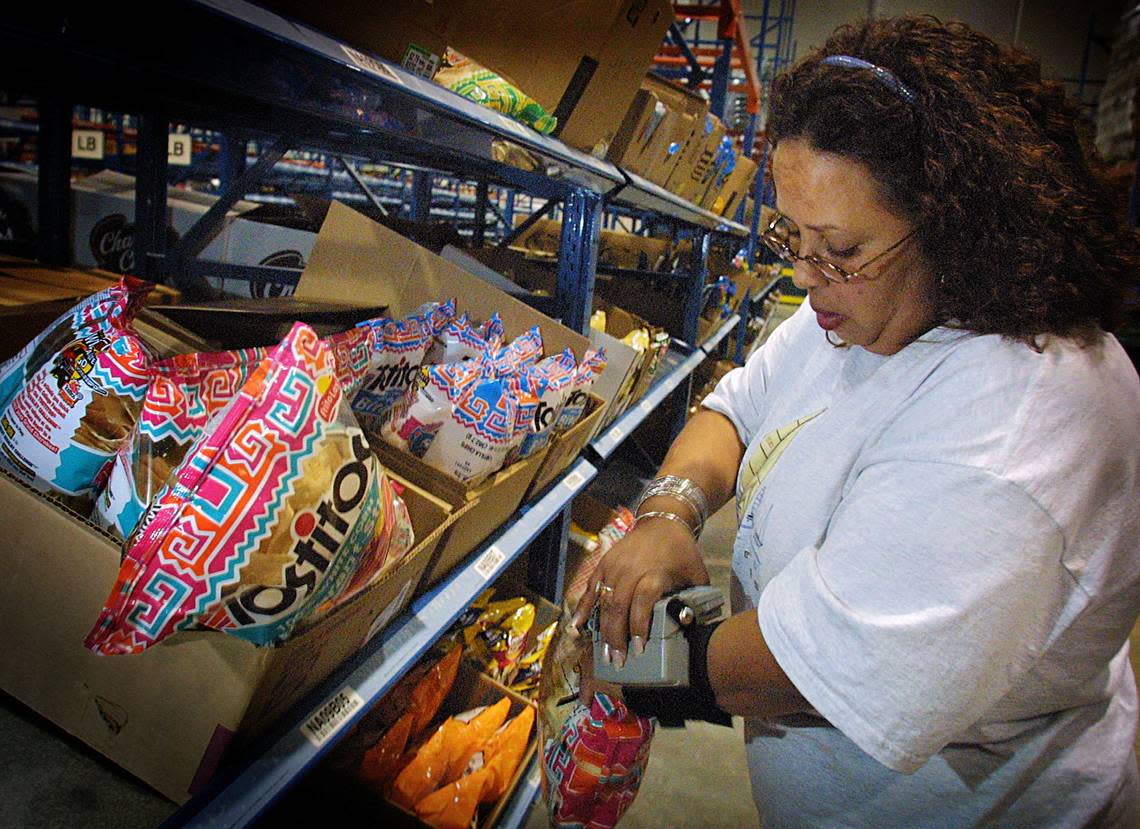
Delivery expansion
Published April 10, 2002
Six months after launching its online grocery service, Publix Super Markets is offering delivery to parts of Miami-Dade County.
PublixDirect.com started taking orders in 15 North Miami-Dade ZIP Codes, which include Aventura, North Miami Beach, Bay Harbor Islands, North Bay Village and Miami Shores.
The online grocery service was already available throughout Broward County and in southern Palm Beach County.
Since beginning in September, PublixDirect has filled more than 55,000 orders from its Pompano Beach distribution center.
The Miami-Dade roll-out completes the original plan to serve consumers within a 25-mile radius of the Pompano facility. Future expansion remains a possibility.
“Based upon customer demand, we may look at adding additional ZIP Codes,” said Lee Brunson, a Publix spokesman.
The service is running 48 trucks, which are delivering an average of 3,500 orders per week. That number is projected to increase by about 20 percent within the next two months, but the company has yet to reveal how long it will take for the service to break even or better yet, make money.
PublixDirect has already tried to meet consumer demand by expanding the online delivery, 8 a.m. to 9 p.m. seven days a week. Certain ZIP Codes in Miami-Dade may not be eligible for the 8 a.m. delivery because of problems getting through rush-hour traffic. The company is looking at the possibility of 7 a.m. deliveries for those areas.
Minimum order for delivery remains $50 and new customers have the $7.95 delivery fee waived for 30 days after they sign up for the service.
Both new and old customers will find an enhanced product selection next month, when the online grocer adds deli platters, sushi and fresh flowers to the mix, which already includes everything from fresh-baked goods to ice cream, produce and seafood.
“We’re constantly listening to our customers to make sure we have the right product at the right time for them,” Brunson said.
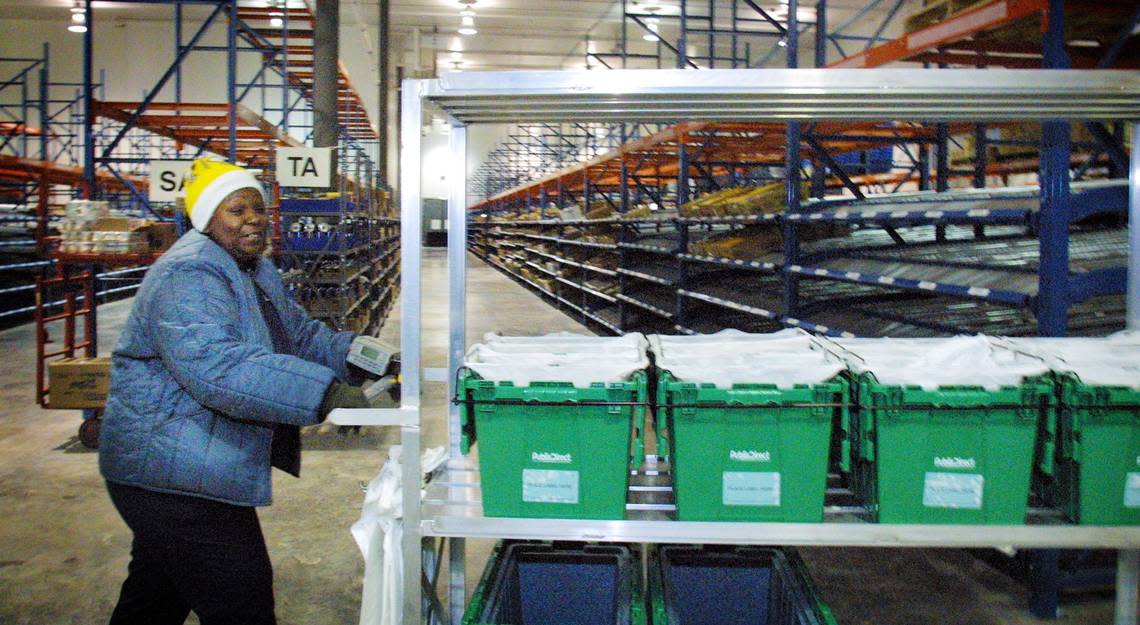
Grocery deliveries catch on
Published Dec. 16, 2001
PublixDirect, launched two months ago, now offers customers in most of the county the chance to order fresh produce, meats and milk for home delivery. It’s the first such service in Florida.
Online grocery shopping is a costly service that has driven some dot-coms out of business. So Publix started slowly, launching in 13 ZIP codes confined to northern Broward and southern Palm Beach counties.
Now PublixDirect serves 51 ZIP codes from Boca Raton to Fort Lauderdale. It plans to add 10 ZIP codes in the south end of the county - chiefly in Pembroke Pines, Hallandale Beach and Miramar - by January.
The online grocer reports 5,000 customers who have placed at least one order and roughly 14,000 who have registered with the site.
Here’s how it works:
Sign on to www.publixdirect.com
You can enter your ZIP Code to see if the service is available in your area. Then set up an account with your address, etc., choose a delivery time and start shopping.
It’s not quite a virtual full-service Publix.
You can’t use coupons, get film developed or fill a prescription - yet; those ideas are being studied. You can’t check the date on a milk carton. And the website may not offer every item you’re looking for.
The online service, a wholly owned subsidiary of Publix, started with a selection of 9,000 items and now stocks about 10,000, a little over a quarter of what you’d find in a full-size Publix market.
On some items, you may have to buy more than you need. Shrimp, for example, must be ordered a pound at a time, grapefruits in 3- or 4-pound bags.
Minimum purchase is $50, plus an $8 delivery fee - though the fee is waived for the first 30 days after you enroll.
Tom O’Connor, president of PublixDirect, studied earlier online grocery services and expected a target audience of wealthy, two-income families looking for after-work delivery.
“What we’re finding out in Broward is just the opposite,” O’Connor said. “Our morning windows sell out as quickly as we can schedule trucks to go out. It’s mothers at home with small children. It’s retired people.”
Top sellers: Boar’s Head sandwich meats, which online shoppers can order without waiting in line at the deli; those big, heavy bottles of spring water; and milk.
The biggest complaint: No coupons. The supermarket giant designed its online service without coupons, thinking on-line customers wouldn’t use them. But it turned out that PublixDirect customers are just like the typical grocery store clientele. They love their coupons.
“It appears to be very important to a significant number of people, to where we are rethinking our strategy,” O’Connor said.
Finding exactly what you need on the site may take some searching - and if you don’t have the fastest computer at home, browsing may take longer than zipping down the aisles in your sneakers. (It’s faster if you turn off the images).
For example, if you type in “shrimp” and hit Search, you get three pages of listings - everything from gourmet cat food to Japanese noodles. On Page 3, you find fresh, raw shrimp. Three kinds, ranging in price from $5 to $20 a pound.
And if you need to read labels, you may be out of luck. Looking for diapers, you’d better know the size. Does baby wear Size 1 or Size 2? The package says what the sizes mean. But the pictures on the website are too small to read the print.
The service doesn’t do same-day delivery, so place your order before you run out of essentials.
Our order came right on time.
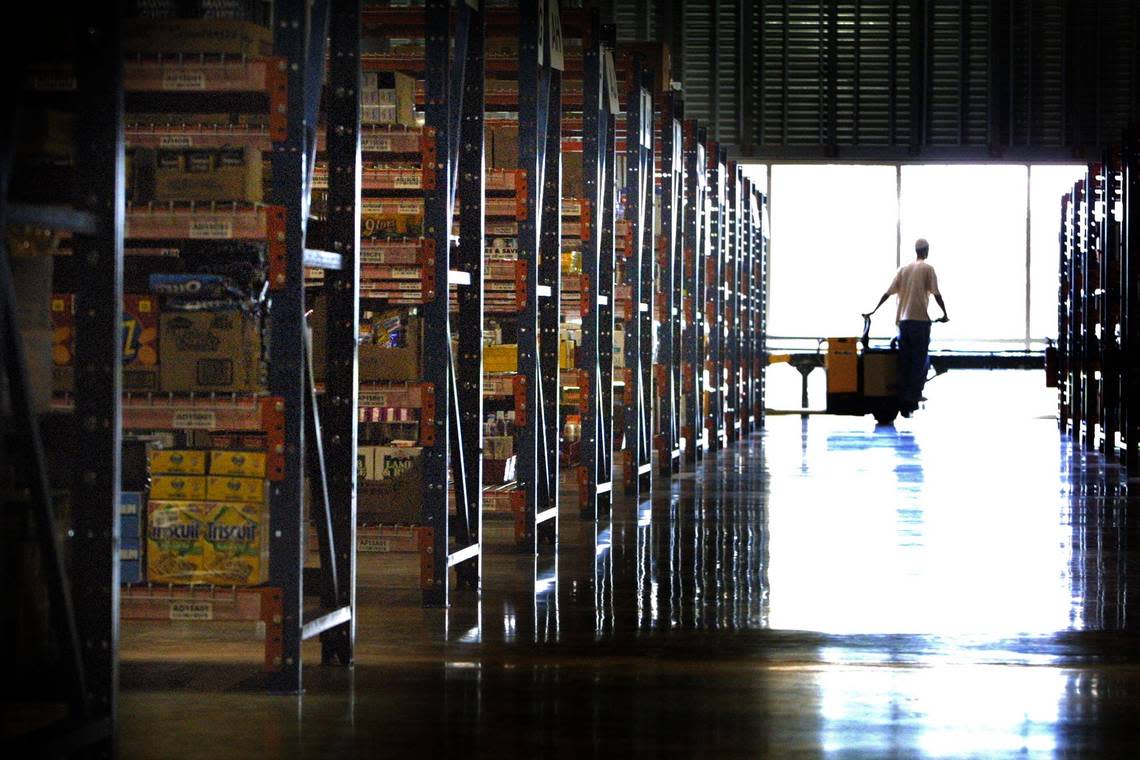
The end of Publix’s delivery service
Published Aug. 23, 2003
Publix Super Markets is closing its online grocery-shopping and home-delivery service, Publix- Direct, as of today after failing to turn a profit on it in two years.
The shutdown will affect 382 employees at a distribution center at Pompano Beach and 58 at PublixDirect headquarters in Alpharetta, Ga.
“We just didn’t have the volume to keep it operating,” spokeswoman Maria Rodamis said. “We didn’t see it being profitable in the near future.”
Orders will be delivered through today, she said.
Charging $7.95 for a delivery of at least $50 in an area stretching from the Palm beaches to Kendall, PublixDirect filled its orders out of the distribution center, setting delivery times according to customers’ schedules.
The logistics of such an operation are enormous, said Jenny McTaggart, associate editor of Progressive Grocer trade journal.
“You have to get a lot of orders in the same area or have empty trucks,” she said. “It takes a lot of work to make it work.”
The closure is the latest in a retail segment that became notorious for dot-bombs in the early days of the Internet explosion and one in which few, if any, businesses have turned a profit.
Many online grocers have found that the model of charging $5 to $10 per order for a personal-shopping, home-delivery service generates high costs and a loyal but ultimately limited slice of customers. Those include the sick, the elderly and time-starved working parents or professionals.
“It definitely has viability, but not everyone is going to be able to do it,” McTaggart said.
The Lakeland-based Publix will attempt to place the affected employees in its supermarkets and work with outside employment agencies, Rodamis said. Workers will receive nine weeks’ pay.
The closure will cost the $15.9 billion-revenue company $30 million in its third-quarter revenues and dent net earnings by $18 million, or 10 cents per share, in the three months ending Sept. 27.
The shutdown came as a blow to several devoted users of PublixDirect.
“It’s going to make things a lot harder for me,” said Judy Harrison, of Miami, who started using it a year ago. “I have health problems, so having someone carrying in heavy items in this oppressive heat was an enormous help.”
Barbara Kornblau, a Pinecrest attorney with six children who is president of the American Occupational Therapists Association, said she was disappointed.
“This was a time saver, a convenience for me, but there are a lot of people who really depend on it as a key to independent living,” she said. “It really provides a needed service to the community.”
Although most online grocers have had a difficult time in reaching profitability, analysts called PublixDirect’s sudden shutdown surprising.
Brick-and-mortar supermarkets like Publix, Safeway and Albertson’s are generally viewed as having a better shot at success with online ventures than pure-play Internet enterprises like WebVan, which collapsed in 2001, and Peapod, which was saved by a $73 million bailout by Dutch supermarket company Ahold.
But a key factor in PublixDirect’s demise may have been its model: Orders were filled and dispatched from a central warehouse.
“The model PublixDirect embraced needs volume,” analyst Christine Overby, of Forrester Research, said.
She added that the “pick-and-pack” model, whereby an employee fills online orders from store shelves, has proven to be more cost effective.
Safeway.com, which last month expanded Seattle, its eighth West Coast market, switched to that model because of the logistic hurdles involved with a central warehouse, spokesman Mark Marymee said.
“You can have one customer 50 miles away, and whether it’s efficient or not, you have to make the delivery,” he said.
The company now fills orders out of strategically placed supermarkets, each covering territory within a 20-mile radius or 20-minute drive, he said.
The service is still losing money, but the company sees profits as achievable, Marymee said.
“We wouldn’t be expanding into new markets if we didn’t think we were headed in that direction,” he said.
Some analysts, meanwhile, say online groceries may still prove to be viable businesses but will likely corner only a small percentage of supermarket shoppers.
“They’re going to have very modest growth and appeal to small, urban pockets,” Overby said. “We see consumer interest in the service, but we’re seing various models and the costs associated with each.”
